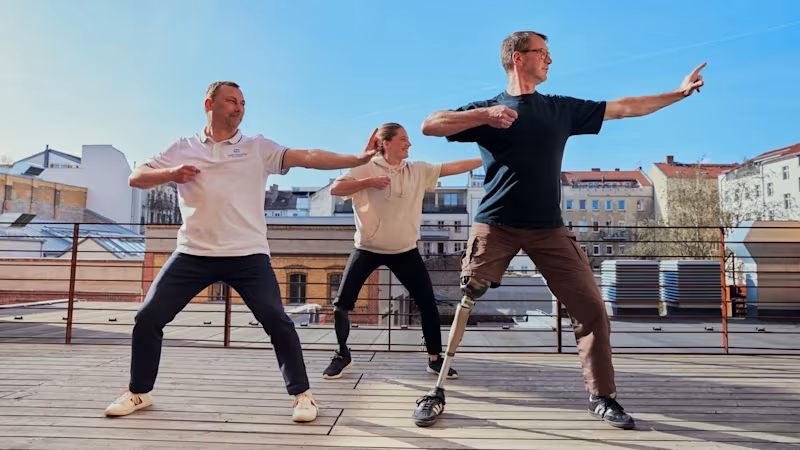Active life and sport with a disability

Active living and sports
Sports open up a whole new world of possibilities to people with disabilities. Back when Ottobock began supporting Paralympic athletes over 30 years ago, the introduction of special carbon springs radically improved athletic performances at the Paralympic Games. Over the following years, we continued to work closely with role models from the world of sports to optimize our sports products and services. New methods and products were tested – with the aim of providing better support not only to top-level athletes but to children and recreational athletes as well.
Today, those who look for them will almost always find appropriate opportunities to engage in individual or team sports, as well as the appropriate equipment to get them started. When it comes to choosing or using the right prosthetic or orthotic device for active living, a few tips can be a big help for newcomers in particular. One thing we have learned from sports – and this applies to professionals and amateurs alike – is that you can often achieve so much more tomorrow than you believe possible today.
Living an active lifestyle benefits our bodies and minds. Exercising your cardiovascular system, maintaining personal mobility, unwinding, and overcoming challenges – these are all good reasons for people with and without disabilities to take up a sport. But where do you begin? On the following pages, we provide information and examples to help newcomers get started.
Sitting volleyball
Team sports are group experiences. Besides keeping you fit, they also have a strong social dimension. Nobody wins or loses alone. Victory is only achieved by working together. Those who train and invest themselves on behalf of a team will enjoy a deep sense of camaraderie and mutual respect. Naturally, team members are expected to be reliable in attending practices and keeping agreements. But commitment can be very helpful for people especially when they begin a sport, because it helps them integrate the new activity into their routine on an ongoing basis.
There are numerous team sports that people with and without disabilities can play together. It’s worth trying various options before you decide which sport and which team is best suited to your needs and wishes. There are various different team sports, but if you would like to know more about a particular sport or where you can engage in a sport locally, please contact your national disabled sports association.
Sitting volleyball is a dynamic game in which two teams of six play across a 3.77-feet-high net. The technique is identical to that of conventional volleyball, the only difference being that the player’s torso must be touching the ground when they make contact with the ball. Sitting volleyball is ideal for athletes with leg disabilities, as players are seated throughout the game. Players may use their arms and legs to move around, but no other devices are permitted.




